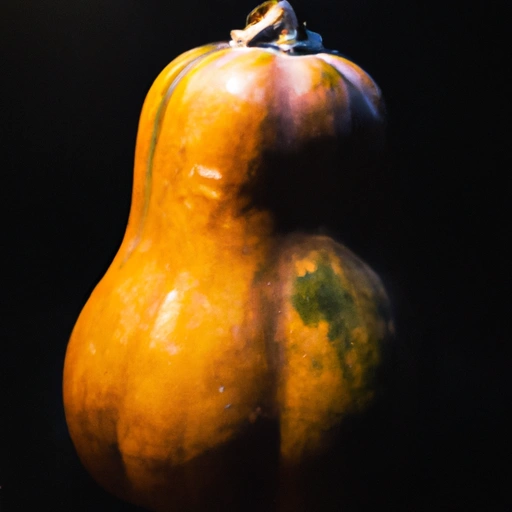Pumpkin
Description

Pumpkin is a versatile food ingredient known for its rich orange flesh and distinct shape. It belongs to the gourd family, Cucurbitaceae, and is widely recognized as a symbol for fall and harvest time, especially in American culture. Pumpkins come in many varieties and sizes, ranging from small ornamental types to large ones used in cooking. In recipes, pumpkin can be used in various forms such as pureed, roasted, or as pumpkin seeds.
Common uses
Pumpkin is commonly used in a vast array of dishes, from sweet pumpkin pies to savory stews and curries. Its seeds, known as pepitas, are also a popular snack when roasted, and pumpkin seed oil is a specialty product in some regions.
Nutritional value
Calories
A cup of cooked, boiled, drained, and unsalted pumpkin (about 245 grams or 8.6 ounces) contains approximately 49 calories.
Protein
That same serving size of pumpkin provides nearly 2 grams (g) or about 0.07 ounces of protein.
Fat
Pumpkin is low in fat, containing less than 1 gram (g) or 0.035 ounces of fat per cup.
Carbohydrates
Carbohydrates are present in the amount of 12 grams (g) or around 0.42 ounces per cup of cooked pumpkin.
Vitamins
Pumpkin is a great source of Vitamin A, with one cup offering over 200 percent of the recommended daily intake. It also contains vitamin C and E.
Minerals
It provides key minerals such as potassium, calcium, and magnesium.
Health benefits
Regular consumption of pumpkin can contribute to overall health due to its high vitamin A content, which is important for eyesight, skin health, and the immune system. The fiber in pumpkin aids digestion, while its antioxidants can help combat oxidative stress.
Potential risks
While pumpkin is generally safe for most people, those with allergies to gourds should avoid it. Additionally, consuming very high amounts of pumpkin-based foods that are rich in beta-carotene could lead to carotenemia, a condition that temporarily yellows the skin.
Common recipes
Pumpkin is a star ingredient in recipes such as pumpkin pie, pumpkin bread, and pumpkin soup. It is also used in risottos, pastas, and to make pumpkin spice flavoring for various desserts and beverages.
Cooking methods
Pumpkin can be roasted, steamed, boiled, or pureed. It is often cubed or sliced for incorporation into dishes. Pumpkin seeds can be eaten raw or roasted for a crunchy snack.
Pairing with other ingredients
Pumpkin pairs well with flavors like cinnamon, nutmeg, ginger, and cloves, as well as savory herbs like sage and rosemary. It complements both sweet and savory partners, such as apples, pecans, sausage, and cheese.
Summary
Pumpkin is not only a symbol of autumn festivities but also a nutrient-rich ingredient that can be used in an array of sweet and savory recipes. Its low calorie count, combined with its high vitamin and mineral content, makes it an excellent choice for health-conscious cooking. From traditional pies to innovative dishes, pumpkin offers a range of flavors and textures to delight the palate.